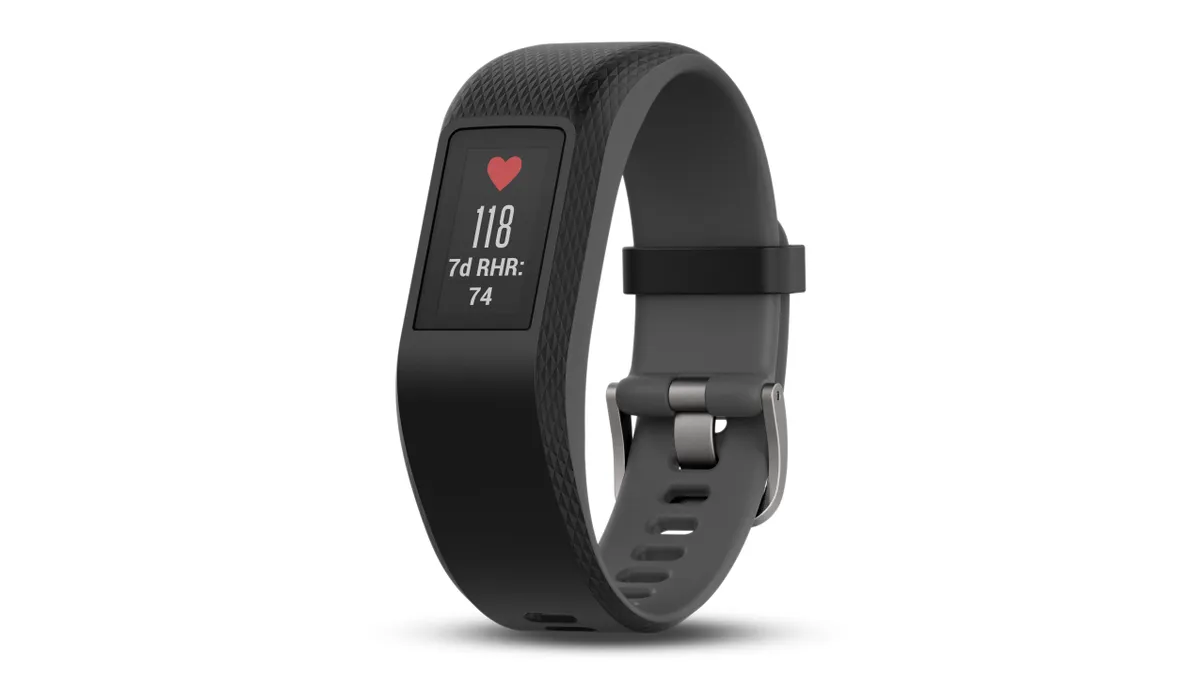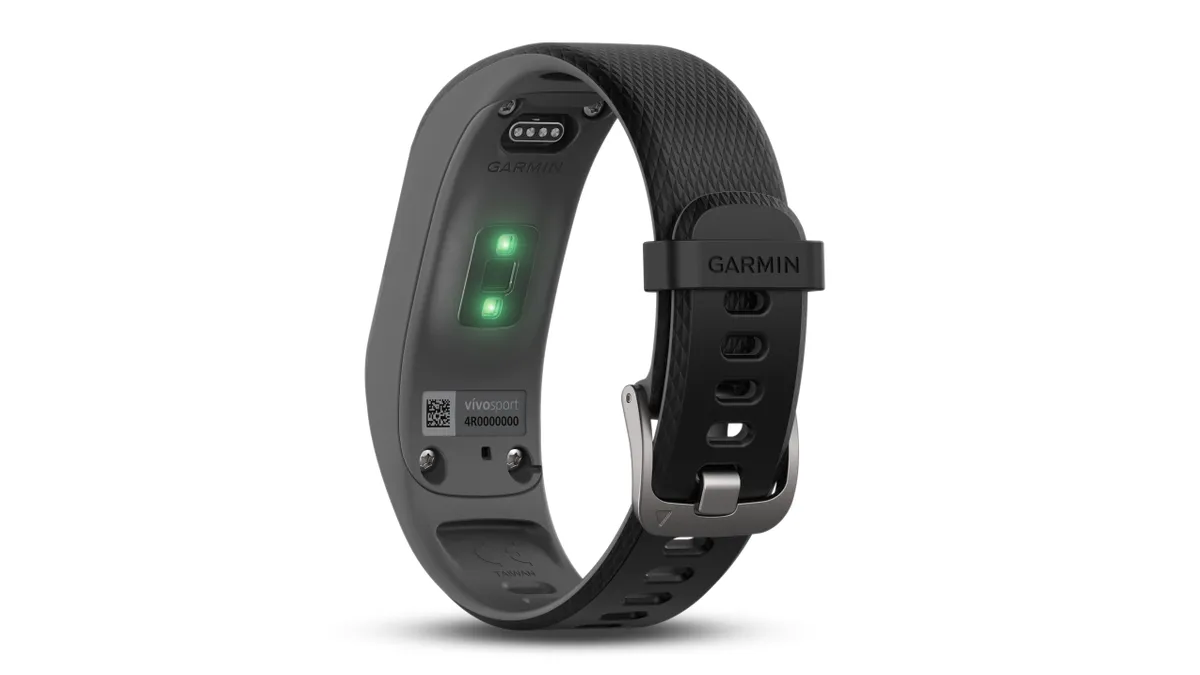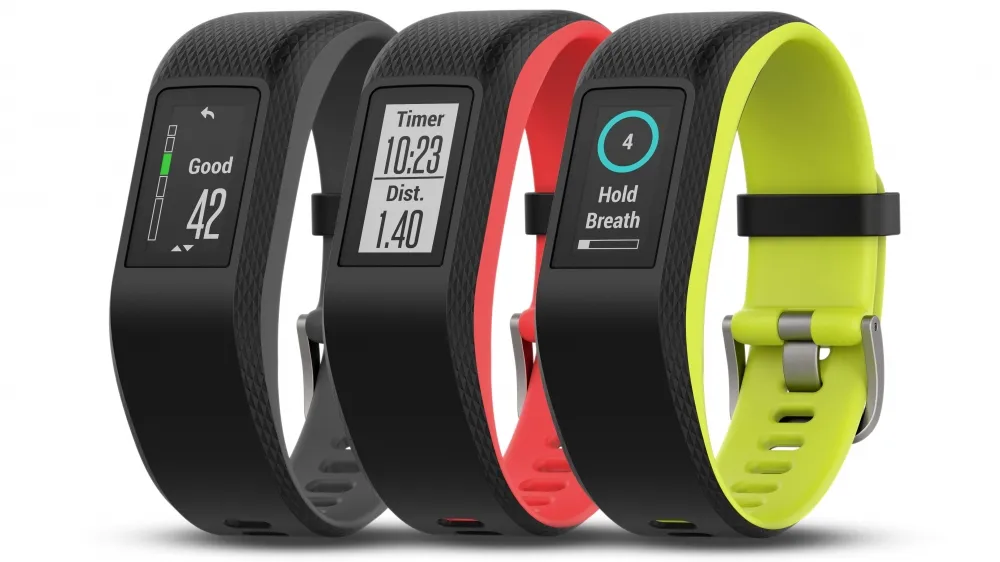Garmin takes aim at the FitBit Charge 2 with its new Vivosmart, a streamlined activity tracker that packs in all the functions you'd expect, plus GPS tracking to allow you to record your route.
- Best GPS watches for cycling: how to choose the right one for you
- Wrist-based heart rate monitors vs. chest heart rate straps
Garmin has released a number of new products for 2017 and the Vivosmart sits firmly at the functional, minimalist end of the wearable scale. While it looks a lot like the FitBit Charge 2, there are a few key differences, the main ones being the colour touchscreen and the inclusion of GPS tracking functionality.
“We realize that many customers prefer to work out with a slim fitness band but don’t want to compromise on the fitness and connectivity features typically found on smartwatches,” said Andrew Silver, Garmin EMEA product manager. “With vívosport, you get the best of a smart activity tracker and a sports watch in an ultra-slim, ultra-sleek design.”
For those who like features but not the look of wearable tech, the new Vivomove HR may be more up your street. While it also has heart rate monitoring and other health and fitness apps, it comes in a package that looks like a classic analogue watch.

Garmin Vivosmart features at a glance
- Garmin Chroma colour touchscreen
- Wrist-based optical heart rate monitor
- GPS
- Claimed swim- and shower-safe
- Claimed battery life of 8 hours in GPS mode, 7 days in smartwatch mode
- Built-in sports apps for running, cycling, cardio and strength training
- LiveTrack feature
- Connect to smartphone for call, email and text alerts
- Connect to and control Garmin Virb camera
- Sleep tracker
- VO2 max estimate
Health and fitness monitoring
The Vivosmart has an optical pulse monitor which tracks heart rate throughout the day, and also provides a VO2 max estimate based on this. Together, these feed into providing the wearer with a 'fitness age'.
The device also offers 'stress tracking'. By detecting how variable the wearers heart rate is it provides an estimate of stress levels, which can be tracked throughout the day and over time to help identify and alleviate stressful conditions. To help with this, the Vivosmart comes loaded with breathing exercises to aid the wearer to relax.
Built-in apps allow the wearer to track activity during indoor and outdoor workouts including walking, running, cycling, weight training, cardio, HIIT and more. Garmin IQ, which automatically detects and identifies certain sports, means you don't have to worry about starting and stopping the device.
Pair the device with the Garmin Connect app on your smartphone or computer and you'll be able to plot changes over time, monitor improvements in health and performance, and map your routes. The Vivosmart can be set up to sync automatically so you don't have to do anything.

Keep safe and keep social
One interesting feature, which is unique (so far) in terms of fitness bands, on the Vivosmart is LiveTrack. This allows designated individuals, invited via email, to track in real time the location of the wearer via a webpage. Garmin claims this adds peace of mind for those training or riding solo.
However, if you're more interested in staying connected with the world at large, the Vivosmart will also relay alerts about calls, texts, emails, social media updates and more from a connected smartphone, and control music as well as connect to a Garmin Virb camera.
GPS tracking
The Vivosmart is one of the smallest devices we've encountered with its own integrated GPS system, which doesn't rely on the GPS on a paired smartphone.
Once connected to Garmin Connect wearers will be able to review routes post-run or -ride, and LiveTrack allows real-time tracking.
Prices and availability
The Garmin Vivosmart is available from September 2017 and retails at £169.99 / $199.99 / AU$299.00.
There are two size straps: small/medium and large; and three colourways: black and slate grey, black and fuschia focus (small/medium only), and black and limelight (large only).

